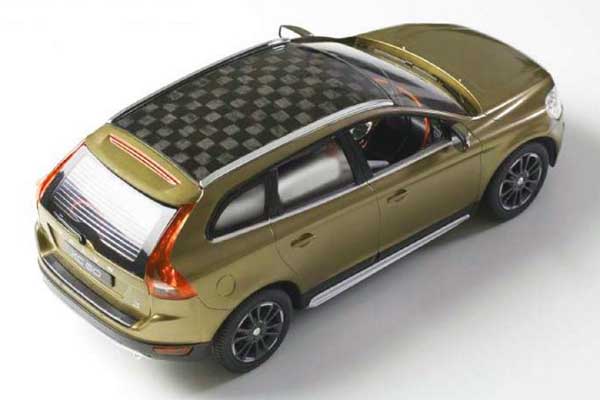Volvo Becomes First Automaker to Sponsor Lignin Concept Design
![]() Print this Article | Send to Colleague
Print this Article | Send to Colleague
With electric car technology evolving at a breakneck speed these days, there are few weeks that pass when we don’t hear about some form of new exotic construction method that promises to increase electric vehicle range, improve power delivery, or perhaps reduce the cost of making electric car battery packs.

These days, the majority of those developments revolve around the use of nanotechnology, or a brand-new material developed specifically for its power density and strength. And while some do focus on using renewable materials in new and unusual ways, we’ve never heard of an electric vehicle battery pack made from wood before.
Lignin is found in most land-based plants, but especially trees. Yet that’s exactly what a team of researchers from the KTH Royal Institute of Technology in Sweden (OTW, February 4) have developed, developing a new carbon-fiber material which has lignin as its key ingredient — a natural polymer found in almost every dry-land plant in the world, including trees. When turned into energy-dense electrodes, this new carbon-fiber material can result in a lighter and more energy-dense battery, improving electric car range and performance.
As the official press release (via IET) details, lignin is found in the support tissues and cell walls of vascular plants and some types of algae. First discovered more than 200 years ago by Swiss botanist A.P. de Candolle, lignin is one of the most commonly-occurring organic polymers on earth, second only to cellulose. While the chemical composition of lignin can vary from plant to plant, it is incredibly versatile and strong, and is one of the reasons why wood is so strong. Because of its abundance, more than 1.1 million metric tons of lignin is commercially produced each year, much of it as a byproduct of making paper pulp.
And that’s where its use in carbon fiber composites come into play. While most carbon fiber construction today relies on spinning or drawing a synthetic polymer from substances such as polyacrylonitrile, rayon, or petroleum pitch. Once spinning or drawing of the fiber has occurred, the threads are then heated through a series of increasingly high temperatures to drive off non-carbon atoms and ultimately form molecular bonds to form long, narrow graphene sheets. Once produced, these carbon fibers are then introduced to a polymer resin such as plastic to produce lightweight but ultra-strong carbon fiber reinforced plastics.
The whole process of making the carbon fibers themselves is costly and time consuming, one of the reasons why carbon-fiber is so expensive. But, says Göran Lindeberg, professor of chemical engineering at KTH Royal Institute of Technology, Lignin could dramatically reduce production costs.
"The lightness of the material is especially important for electric cars because then batteries last longer," Lindbergh explains. "Lignin-based carbon fiber is cheaper than ordinary carbon fiber. Otherwise, batteries made with lignin are indistinguishable from ordinary batteries."
To prove the validity of the process, researchers from KTH, the Swedish research institute Innventia, and Swerea, a research group for industrial renewal and sustainable development, fitted a model electric station wagon with a carbon-fiber roof made from Lignin and a lightweight battery which uses Lignin as its electrode material.
Being Swedish, the model was, of course, of a Volvo.

It's only a model, but one day in the not-too-distant future it could now be in a full-size car.
Eventually, Lindberg says that carbon-fiber made using Lignin could be used to both provide structural integrity to a car while simultaneously storing electrical energy, a concept already proposed by one of his colleagues at RTH in an earlier research project.
As seen from BMW’s extensive use of Carbon Fiber Reinforced Plastic (CFRP) in its BMW i3 and BMW i8 plug-in cars, structural use of carbon fiber can dramatically lower a vehicle’s weight and thus increase its fuel efficiency. If the journey from lab to production line can be made for Lignin-based batteries and body panels, electric cars could become cheaper to build as well. Lignin is being given significant attention in plans to become a new stream of industrially versatile material.
This past week (February 11) OTW covered the use of new photocatalysts being used to convert lignin into more desirable products.


